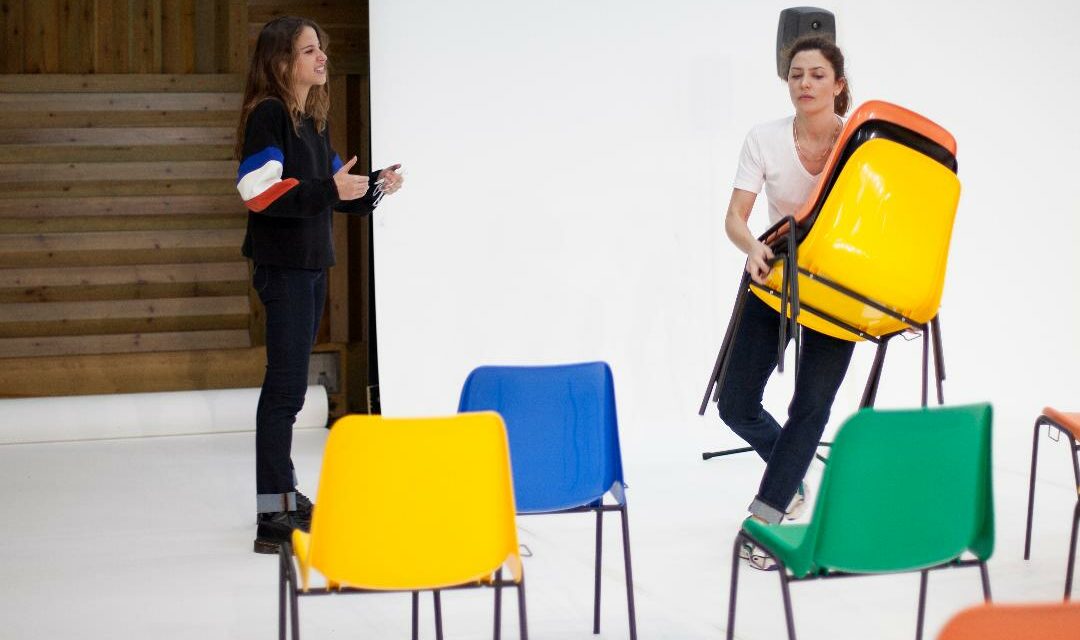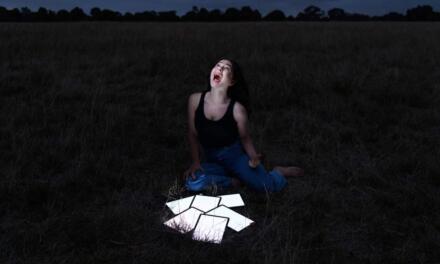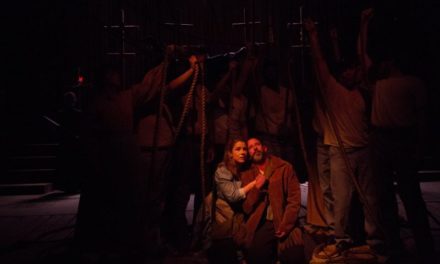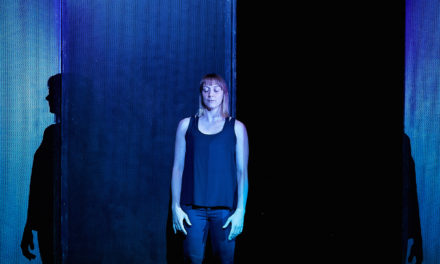Tickets for French writer-director Pascal Rambert’s Hermanas (Bárbara And Irene) (English title Sisters), sold out at Madrid’s Pavón Kamikaze theatre on the second day of its run. With the Spanish actresses of the moment— Bárbara Lennie and Irene Escolar—cast in the roles of two warring sisters, the production was always going to have something of a buzz about it. Rambert, winner of the Grand prix de l’Académie Française in 2016 for his extensive body of work as a writer, choreographer and director, is an associate artist at the Pavón Kamikaze where he previously presented both La Clausura de Amor (English title Love’s End) and Ensayo (English title Rehearsal) in 2017. Now he returns with a piece written for four performers but realized across two concurrent stagings: Audrey Bonnet and Marina Hands perform in the Paris run at Bouffes du Nord in November and December 2018—where Rambert is also an associate artist— and now and Lennie and Escolar present the piece its Spanish-language version. Actresses and characters share the same given name. Rambert has directed and designed both productions (with Coto Adánez responsible for the Spanish-language translation).
When Irene rocks up out of the blue to see her Bárbara at work, the latter is not best pleased. Irene marches on stage through the auditorium, wheeling a white suitcase as if she plans to stay. The empty stage with four racks of brightly colored plastic chairs and two speakers suggest a meeting hall. Bárbara has made a career in the charity sector—she motivates and inspires others to do good—but her sister appears impervious to her merits. From the moment Irene arrives, it’s clear she has an axe (or two) to grind. There are no niceties, no pleasantries; antagonism and accusation prevail from the word go. There may only be three years between the two sisters, but the emotional gulf is enormous and Irene loses no opportunity to point it out. The indictments pour out in quick succession: that Bárbara had it in for her from the moment she peeped into her crib as a toddler; that daddy loved her best; that she couldn’t bear to see her younger sibling succeed at anything. Bárbara appears nonplussed. She coolly accepts that they are “enemies” and suggests Irene just leave but Irene has other intentions. She wants to scratch at the wound to see whether her sister bleeds. For 85 minutes that’s exactly what happens as Irene seeks to decenter an elder sibling known for her calm, unflappable demeanor.
There’s a beguiling enigma at the heart of Rambert’s play with next to no exposition and brief clues as to the sisters’ past littered through the slurs. It’s never entirely clear what has caused the resentment between the sisters to fester but fester it has. Crucially, the reasons don’t matter, what matters is the wrath that each harbors. For the pugnacious journalist Irene, the rage is vocally articulated: that Bárbara was the better swimmer; the better student; the better daughter. While Irene dances on her feet like a boxer waiting to bounce, Bárbara opts for stillness. She watches and waits. Early caution as both circle each other like predators is replaced by moments where Irene lashes out physically, grabbing her sister’s arm or pulling her on to the floor. Irene’s suitcase is like a weapon, tossed at her sister and used as a protective shield. Bárbara’s responses seem to suggest this is not the first time Irene has arrived uninvited and caused a scene. At one point Bárbara refers to her as “a rabid dog.”
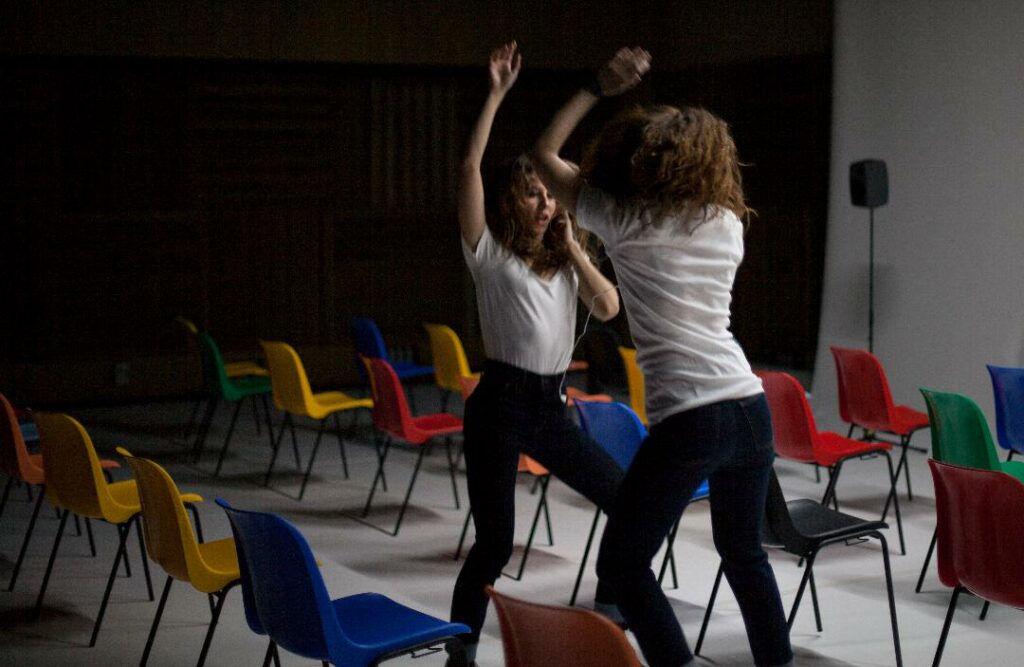
Irene Escolar and Bárbara Lennie in Sisters Photo: Vanessa Rabade
A portrait of two very different personalities emerges. A confident older sister who excels both intellectually and sportingly, and a younger sibling who always felt she was living life in her shadow. Bárbara likes order— she puts the chairs out for the event she is hosting that evening in neat rows that Irene provocatively overturns. Irene creates disorder—walking between the rows and knocking down the lectern as if to unsettle her sister. The chairs become a protective barrier between them, an emotional as well as a physical line of defense. They are also for Irene obstacles to be knocked over as she seeks to get closer to her distant elder sister. Like the chair that Irene hurls at her sister, words are there as weapons to be vomited out like bile. Language is there to be dismantled, destroyed and undermined. Watching Lennie and Escolar is a profoundly unsettling and strongly hypnotic experience.
Bárbara accuses Irene of being a parasite, always seeking to emulate her and never willing to share. Irene puts headphones from her phone in her ears to shut Bárbara out. They face in different directions as they address each other—a visual image both of their refusal to listen and to the gulf between them. At moments Bárbara leaves the stage, in frustration, anger or plain desperation; Irene too departs the stage in fury. But each always returns drawn like a magnet to the other.
Irene’s defenses occasionally come down. An admission of how much she loved and admired her big sister demonstrates a need to be validated; a moment where she plays her mother suggests a need to recreate that which she was not able to experience. But then the body tightens, the anger returns, and the recriminations begin again….
As the piece progresses, it becomes evident that Irene has come to grieve for her recently deceased mother. Irene wants to know why Bárbara locked her out of the final months of her mother’s life but this is a conversation that Bárbara doesn’t want to have. At first Bárbara opts for lies but then simply refuses to engage with Irene. Through the insults, invectives and slurs, some sense of a past can be constructed but it’s a past neither can quite agree on beyond a few sketchy facts. Their father was an archaeologist, their mother a writer. Irene was previously married to Felipe who may have had some sort of prior relationship with Bárbara. Bárbara seems to be in some closeted relationship with Anabel which may (or may not) be faltering. Shared encounters and incidents are recalled in a very different manner. Bárbara took control of their mother’s death in ways that Irene cannot stomach. But Irene’s allegations of her sister’s obsessive control are met with Bárbara’s claims that Irene’s overbearing presence doesn’t allow anyone else space to breath. Each sister has wielded power in damaging ways. Love has indeed torn them apart.
There are brief instances when the sisters come together. They dance in sync to Stefan Gruenwald and Lokee’s 2016 hit Wonderful Life like frenzied banshees, sharing an earphone each as the song plays on Irene’s phone. It is as if both have been transported to another space. Lights flash and music pulsates as tensions are released through the swaying bodies. Their bodies may not touch but the complementary moves suggest a shared empathy. It’s a moment of incredible release that recalls Chéreau’s use of Massive Attack’s “Karmacoma” in his 1995 production of Bernard-Marie Koltès’s In The Solitude Of Cottonfields. Lennie and Escolar’s bodies recall those of Cheréau and his co-star Pascal Greggory, stepping outside the narrative of the play for a brief instant of togetherness through choreographed dance.
Watching Lennie and Escolar perform, I am taken back to Nuria Espert and Julieta Serrano’s performances in Víctor García’s electrifying 1969 production of Genet’s The Maids that I saw when it was revived in 1983: bodies that bounce across the stage; words that are spat out with venom; a terrain that knows no limits. At times as the actresses reach for one of the four plastic bottles of water that are positioned stage-left and -right, it is as if they briefly step out of character, like boxers in the ring between rounds. Once re-hydrated, the battle recommences.
Bárbara begins with hair tied back but loses the pony tail as the struggle intensifies. Irene scrapes her hair back when preparing for an assault. Both remove their jumpers for moments of acute confrontation. Bárbara’s green jumper suggests something earthy. Irene’s bold red, white and blue design is more striking—a desire to stand out. They may appear to have two different ways of approaching the world, two different ways of being but there are clear parallels which are signaled in the costume. When each removes her jumper, each sports denim jeans and a white t-shirt. The simplicity of their attire suggests a uniform; scratch beneath the surface and the sisters may have more in common than first appears.
Rambert’s production doesn’t opt for easy naturalism. The set is like a playroom of sorts for the sisters’ games— games as unsettling and disturbing as those of Michael Haneke’s Hidden (2005). The florescent lighting is cold and clinical a as if Bárbara and Irene are primed for dissection. Lennie and Escolar give extraordinary performers, it is as if internal moods are externalized both through language and gesture. Sisters embodies the anxieties of a moment in history where public discourse has been contaminated by a culture of abuse and anger; and it makes for compelling theatre.
Sisters tours across Spain until May 18.
This post was written by the author in their personal capacity.The opinions expressed in this article are the author’s own and do not reflect the view of The Theatre Times, their staff or collaborators.
This post was written by Maria Delgado.
The views expressed here belong to the author and do not necessarily reflect our views and opinions.

